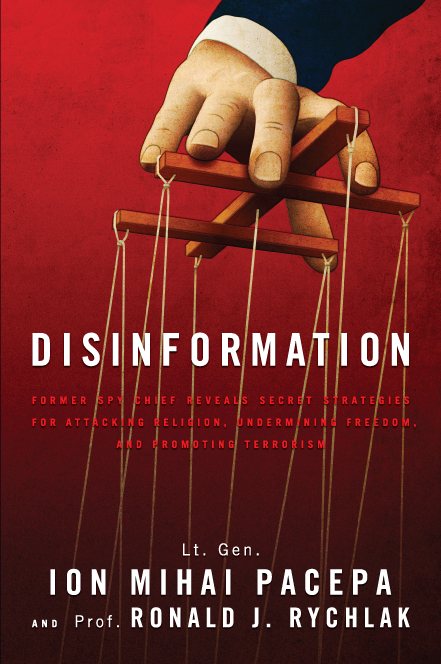The Great American Church Fire Hoax
The Campaign
In the spring of 1996, a spate of news reports about black church fires in America dominated airwaves and inflamed decent people both at home and abroad. The World Council of Churches (WCC) flew thirty-eight pastors to Washington, DC, to provide government leaders with more information about this racist tragedy. In a June radio address, President Clinton spoke with emotion about his own “vivid and painful memories of black churches being burned in my own state when I was a child.” Charging that “racial hostility is the driving force,” he pledged the full power of the federal government to the crisis and put two hundred federal agents on the case.
By late summer, more that twenty-two hundred articles in the press had condemned what the Center for Democratic Renewal (CDR) called “a well-organized white-supremacist movement.” The Church Fire Prevention Act of 1996 was signed into law in July, making church arson a federal crime, and $12 million was appropriated for combating fires at churches with black congregations. The National Council of Churches (NCC), the national affiliate of the WCC, took out full-page ads in the New York Times, the Washington Post, and several other outlets soliciting donations for its new “Burned Churches Fund.” It reportedly raised nearly $9 million in two days, with contributions continuing at about $100,000/day.
With that kind of money coming in, though, could America really be that racist of a country? Probably not. As it turned out, the whole brouhaha was more media firestorm than actual fire. It was later established by the National Fire Protection Association, a private organization that keeps track of church arson, that the data did not confirm the reports, but rather showed that there had been a dramatic drop in church fires in the years leading up to 1996. Of the few on record, law enforcement officials in the South couldn't confirm any as having been racially motivated, and despite the president's vivid and painful memories, no church burnings had occurred in Arkansas during his childhood.
Michael Fumento traced the source of the black church fire media meme to the CDR, whose mission at the time was to work “with progressive activists and organizations to build a movement to counter right-wing rhetoric and public policy initiatives.” The corrections received comparably scant coverage, and most Americans went on about their lives forgetting the whole thing. But even as they did, their country was being slandered as a cauldron of neo-Nazi racism both at home and abroad.
The key to understanding the significance of this lies in the fact that the World Council of Churches and the CDR, both of which ignited and promoted the story, have been the tools of Russian intelligence since the early 1960s. It was classic disinformation, designed to defame.
 The Technique
The TechniqueDisinformation, write Lt. Gen. Ion Mihai Pacepa and Prof. Ronald J. Rychlak, in Disinformation: Former Spy Chief Reveals Secret Strategies for Undermining Freedom, Attacking Religion, and Promoting Terrorism, is not a synonym for misinformation. The two are as different from one another as night is from day. If the Soviet press fabricated a story and published it through its own outlets, that would be misinformation, and readers in the West would rightly take it with a grain of salt. If, however, the same material appeared in Western media and was attributed to Western sources, that would be disinformation, and its credibility - and therefore it power - would be substantially higher. Since World War II, they write, “disinformation has been the Kremlin’s most effective weapon in its war on the West.”
Disinformation is a science and art born and perfected in Russia. In this his third book, coauthored with Rychlak, a law scholar at the University of Mississippi, Gen Pacepa (pronounced ‘pa-CHEP-a’), the highest-ranking Soviet bloc intelligence officer ever to defect to the West, explains how disinformation works by unraveling some of the most consequential disinformation campaigns of the twentieth century. It’s fascinating reading, covering the Kremlin’s systematic denigration and defamation of Christianity, Judaism, Pope Pius XII, America, and the West through multiple channels and in widely varying communication forms.
But Pacepa didn’t write Disinformation as a matter of historical curiosity. Disinformation has caused worldwide damage to the reputation of the United States. That was a primary Kremlin objective, and it was accomplished stunningly. But now, disinformation is taking root in America itself. That is worse.
The Antidote
To neutralize disinformation, people of conscience must learn to recognize disinformation for what it is because, like the terrorists who killed three thousand Americans on September 11th, 2001, disinformation is usually clothed in innocuous civilian garb.
Gullibility can be costly. Educating the free world is the purpose of Disinformation.
Related Reading:

2 comments:
There actually was a spike in church fires that affected primarily black (although not exclusively) churches. Many, but not all were located in the South. The insurance company I worked for was concerned enough that all churches were visited and security systems and fire protection systems were checked. IN a twist of irony, the arsonist was finally caught and was a resident of Chattanooga, TN. His motivation was that he didn't like churches...period. His picking predominately black churches was based on their being poorer and more rural, and hence less likely to have security systems.
"He didn't like churches ... period."
That's no surprise. The church has always had enemies. Turning it into a race issue where one did not exist was the objective. Your experience corroborates the contention that America was not the cauldron of racial hostility its enemies portrayed it to be. Thanks.
Post a Comment